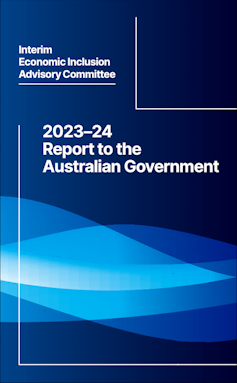how Jim Chalmers is shaping the budget
- Written by Peter Martin, Visiting Fellow, Crawford School of Public Policy, Australian National University

What was Treasurer Jim Chalmers thinking?
Late last year he set up a committee he specifically asked[1] to tell him how bad JobSeeker was.
The exact words in its terms of reference[2] required it to advise him on the “adequacy, effectiveness and sustainability of income support payments”.
It is true that he was sort of forced to. Independent Senator David Pocock made the committee a condition[3] of supporting an unrelated industrial relations bill in the Senate. Its findings had to be published a fortnight before each budget.
Yet Chalmers chose to set a group whose findings would be hard to ignore. He put on it one of Australia’s pre-eminent experts in the adequacy of payments, Professor Peter Whiteford[4]; one of Australia’s pre-eminent experts in labour markets, Professor Jeff Borland[5]; and one of Australia’s pre-eminent experts in calculating disadvantage, Associate Professor Ben Phillips[6].
To give the “interim economic inclusion advisory committee” extra heft, he added the head of the trade union movement, the head of the Businesses Council, the head of the Council of Social Service and the head of the Treasury.
In short, Chalmers set up a committee he couldn’t ignore. So why is he now so keen to talk about everything but its number one recommendation?
Impossible to ignore
Sometimes committees like these end up making so many recommendations that a minister can pick and choose from them.
And this committee did make 37 recommendations, as Finance Minister Katy Gallagher noted this week saying she was “not going to be able to do everything[7]”.
But, unusually, this committee went out of its way to make sure one recommendation stood out above all others.
It reported that, given its short timeframe, it had:
decided to concentrate on the needs of the largest number of Australians experiencing poverty and disadvantage today, namely people on JobSeeker, Youth Allowance and related working-age payments.
It found every available indicator[8] showed the current rates of JobSeeker and related payments were seriously inadequate, whether measured against payments overseas, against the minimum wage, against pensions, or against poverty lines.







